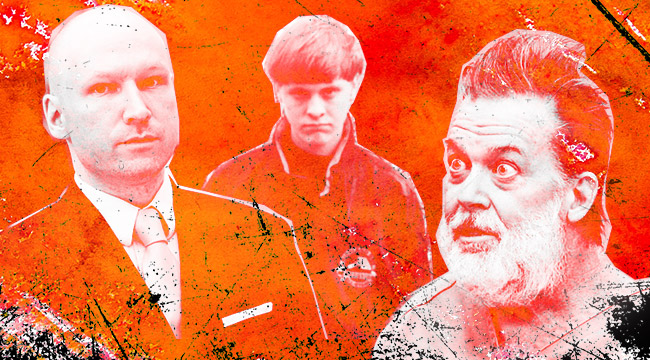
There have been a lot of terrible and terrifying acts of violence throughout the world over the last couple of decades. Lone wolf terrorism seems to be fomenting in places we can’t quite pin down. Not all terrorism or terrorists stem from the same set of circumstances — some of it is based in religious dogmatism, some of it originates with far-right rhetoric, and other segments stem from a far-left agenda.
The Royal United Service Institute, or RUSI, has been studying the numbers from deadly lone wolf attacks carried out in Europe between 2000-2014. Since they only studied lone wolf attacks, the events in Paris and Brussels fell outside their purview. RUSI set up a study that “seeks to improve understanding of lone actor terrorists, their behaviour, and their activities in the period leading up to their intended attack.” Basically, they want to know why are people carrying out attacks solo, and how do we stop someone who operates outside a known terror network. Not an easy task.
There are not a lot of easy answers in the data. RUSI found that “Right-wing extremists kill and injure more people in lone wolf attacks than Islamic terrorists acting alone.” The numbers between 2000-2014 added up to the following:
94 people were killed and 260 were injured in attacks by far-right terrorists. In contrast, religiously inspired lone attacks killed 16 and injured 65 people.
RUSI also found that mental health is a contributing factor, but only around 1/4 of the time. 24% of the perpetrators of religious-inspired attacks had a history of mental illness. While 28% of far-right inspired attackers had a history of mental illness. Interestingly, but maybe not surprisingly, 96% of the perpetrators who carry out lone wolf attacks are men. RUSI concludes that more access to mental health care is needed to stem these acts of violence.
With mental health only being a factor in a quarter of the cases, RUSI makes it clear that there is a lot more that needs to be done. The study of the data showed some harrowing numbers in law enforcement’s ability to stop lone wolf attackers before they actually carry out their attacks. When it came to catching a far-right extremist, “it was established that 40% of right-wing extremists were uncovered by an element of chance.” Part of that is because “only 18% of lone wolf far-right extremist talked about their plans.” So, basically, the majority of these attacks were stopped by blind dumb luck.
Conversely the same data also shows that when it comes to “religiously-inspired terrorism … 88% of interventions were intelligence-led.” Moreover, 45% of religiously-inspired lone wolves talked about their plans openly. That’s 88% of all the lone wolf terror plots that were stopped directly due to the intelligence and law enforcement community. That is a lot of plots. RUSI cites that our law enforcement is actually getting better at this and terror groups are noticing:
Intelligence agencies and law enforcement have become increasingly adept at detecting and disrupting large-scale terrorist plots, potential attackers have instead turned to smaller scale, less sophisticated assaults. In part, this trend reflects a decision by wider extremist groups to adopt lone actor terrorism as a tactic.
This seems to be a puzzle that we are only now getting a handle on. The numbers don’t lie, but what we do with those numbers matter. At the moment the study concludes…
The media, and consequently public attention, is largely focused on violent Islamist extremists; while this may reflect the broader threat, it is at odds with that from lone actor terrorism.
You can read the whole study here.
(Via The Guardian)
